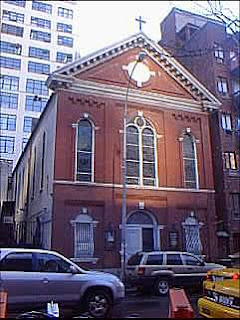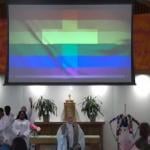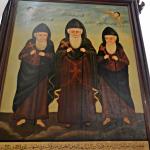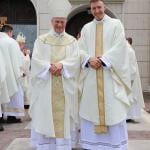 St. Benedict the Moor, Manhattan, New York, N.Y.—The Mission of St. Benedict the Moor was established in New York City in 1883, through the efforts of three priests, Revs. Thomas Farrell, R.L. Burtsell, and Edward McGlynn, D.D. Father Farrell had been pastor of St. Joseph’s Church, Waverley Place, and had become familiar with the conditions surrounding the colored people of New York, who in the years just following the Civil War lived mostly in or near his parish. He understood the difficulties surrounding them in their religious life, and in his will made provision of a small sum of money to found a church for their special use. Dr. Burtsell, chief executor of the will, entered into the plan with such zeal, that soon after Father Farrell’s death, the church at the corner of Bleecker and Downing Streets was dedicated to this work under the title of St. Benedict the Moor. Rev. John E. Burke was soon made pastor, and succeeded in building up, with the good-will of his brother priests and the generous co-operation of the Catholics of New York, not only a strong church, but a St. Benedict’s Home for destitute colored children, situated first in McDougal Street, and then at Rye, New York. It is open to children between four and twelve years, and shelters 170 children.
St. Benedict the Moor, Manhattan, New York, N.Y.—The Mission of St. Benedict the Moor was established in New York City in 1883, through the efforts of three priests, Revs. Thomas Farrell, R.L. Burtsell, and Edward McGlynn, D.D. Father Farrell had been pastor of St. Joseph’s Church, Waverley Place, and had become familiar with the conditions surrounding the colored people of New York, who in the years just following the Civil War lived mostly in or near his parish. He understood the difficulties surrounding them in their religious life, and in his will made provision of a small sum of money to found a church for their special use. Dr. Burtsell, chief executor of the will, entered into the plan with such zeal, that soon after Father Farrell’s death, the church at the corner of Bleecker and Downing Streets was dedicated to this work under the title of St. Benedict the Moor. Rev. John E. Burke was soon made pastor, and succeeded in building up, with the good-will of his brother priests and the generous co-operation of the Catholics of New York, not only a strong church, but a St. Benedict’s Home for destitute colored children, situated first in McDougal Street, and then at Rye, New York. It is open to children between four and twelve years, and shelters 170 children.
In 1898 it was found necessary, owing to the northward drift of the colored population of New York, to move the church to West 53rd Street. Its congregation includes about 2500 colored people, natives of New York, the southern states and the West Indies. St. Benedict’s Mission has charge of all the colored people of New York City, the priests of the church giving their services only to colored people wherever they may be. Many colored Catholics prefer to attend that church which is nearest their homes, but the need, in addition to this, of a special church for colored Catholics, is proved by the fact that more than 50 per cent of the congregation of St. Benedict’s is made up of converts.
The church in New York and the asylum are under the supervision of Rev. Thomas M. O’Keefe, who was appointed to take Father Burke’s place when he assumed the office of Director General of the Bureau for Colored Work. Father O’Keefe was born in New York City in 1862, studied at St. Francis Xavier’s College in New York and was ordained at St. Joseph’s Seminary, Troy, on December 17, 1887.
The parish societies are: the Holy Name Society (established in 1899); Knights of St. Benedict (1908); St. Ann’s Beneficial Society (1854); St. Benedict’s Lyceum (1883); Sodality of the Blessed Virgin (1884); Altar Circle; League of the Sacred Heart; Conference of St. Vincent De Paul and Ladies Auxiliary. The parish also has a special publication, “St. Benedict’s Messenger.”
From The Catholic Church in the United States (1914)











